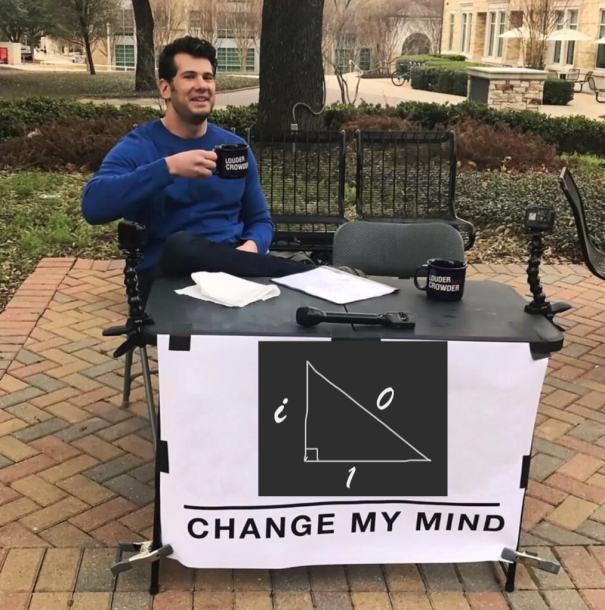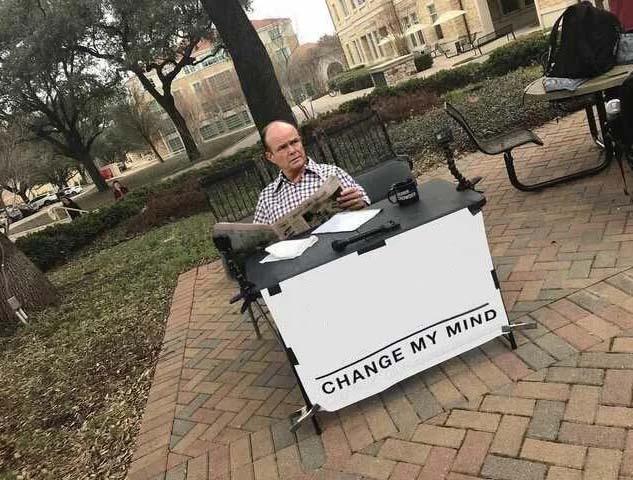"um actually" I guess to properly apply the pythagoras theorem here, you'd need to consider the magnitude of the lengths of each of these vectors in complex space, both of which are 1 (for the magnitude of a complex number you ironically can use pythag, with the real and imaginary coefficients of each complex number.
So for 1 you get mag(1+0i)=root(1^2 + 0^2) and for i you get mag(0+1i)=root(0^2 + 1^2)
Then using pythag on the magnitudes, you get hypotenuse = root(1^2 + 1^2) = root 2, as expected
Shit I meant uhh imaginary number go brr it zero

